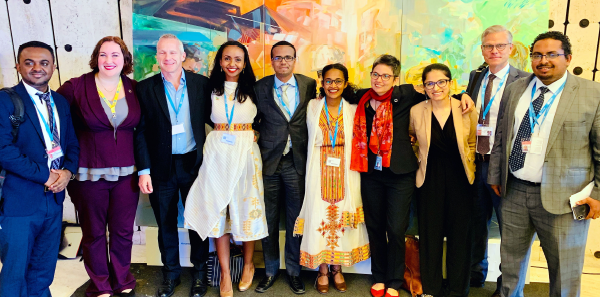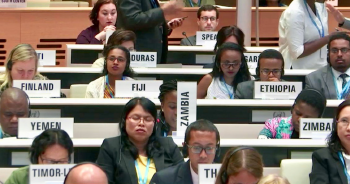
Here in the United States, we take emergency medicine and emergency services for granted. Having an emergency? Help is just a 911 call away.
Explore This Issue
ACEP Now: Vol 38 – No 12 – December 2019The same isn’t true around the world. But now, with the help of the World Health Organization (WHO), things are starting to change.
Imagine what would happen if you needed immediate emergency medical care while traveling in a low- or middle-income country? Is there a system analogous to our 911 system? Even if so, would trained providers in well-equipped ambulances be dispatched? Would you be taken to an emergency department and evaluated by an emergency medicine–trained clinician?
Naturally, people have medical and surgical emergencies in every part of the world. And yet the quality and manner of emergency care delivery vary greatly among countries, even among nations with similar economic resources.
How can we raise standards everywhere so we might ensure timely, high-quality emergency care in nations of all levels of income?
The first step is awareness. From there, implementation can occur.
Fortunately, there is good news to report. Theory is starting to become reality, thanks to efforts by the governments in the nations of Ethiopia and Eswatini (a small landlocked nation in southeast Africa) and their work within the WHO structure.
Most physicians in America and around the world do not know how WHO works. I hope an inside look on how emergency medicine is making waves of change there will shed some light on it.
Resolution 72.16
 The World Health Assembly (WHA) is composed of health ministers from 194 member states (countries). The assembly meets annually in Geneva, Switzerland, and makes recommendations, driving policy and funding priorities for WHO. This past May, the 72nd WHA convened under the theme “Universal Health Coverage: Leaving No-one Behind.”
The World Health Assembly (WHA) is composed of health ministers from 194 member states (countries). The assembly meets annually in Geneva, Switzerland, and makes recommendations, driving policy and funding priorities for WHO. This past May, the 72nd WHA convened under the theme “Universal Health Coverage: Leaving No-one Behind.”
Emergency care is often overlooked internationally, which leaves a significant gap in care for patients who need it the most. The governments of Ethiopia and Eswatini saw this year’s theme as an opportunity to change that.
They argued that emergency care is an essential component of universal health coverage (UHC) and a crucial gateway toward the attainment of several United Nations Sustainable Development Goal targets. Capitalizing on the moment, delegates from Ethiopia and Eswatini proposed a new resolution at the 72nd WHA titled “Emergency Care Systems for Universal Health Coverage: Ensuring Timely Care for the Acutely Ill and Injured.”
During the executive board deliberations in the five months leading up to the assembly, delegates from Ethiopia and Eswatini proposed that emergency care be added as a provisional agenda item. The WHO secretariat prepared a report outlining the state of access to emergency care worldwide and the key actions needed to strengthen emergency care systems.
Simultaneously, technical experts from the aforementioned countries developed a draft resolution and distributed it to all WHO/WHA member states. Country representatives then deliberated over the language of the draft, word by word, line by line. The Ethiopian Ministry of Health chaired these sessions, which continued until all countries agreed on the text. The result became known as Resolution 72.16.
In what many of us feel was a historic moment, Resolution 72.16 went to the floor of the assembly on May 25, 2019. During the discussions, member states and representatives of professional societies spoke from the floor in support of the resolution, frequently commending the sponsoring countries for bringing attention to this area. In the end, the resolution was officially co-sponsored by more than 30 member states, and it was passed unanimously, a triumphant moment for emergency medicine.
Pages: 1 2 3 | Single Page



No Responses to “The World Health Assembly Adopts an Emergency Care Resolution”